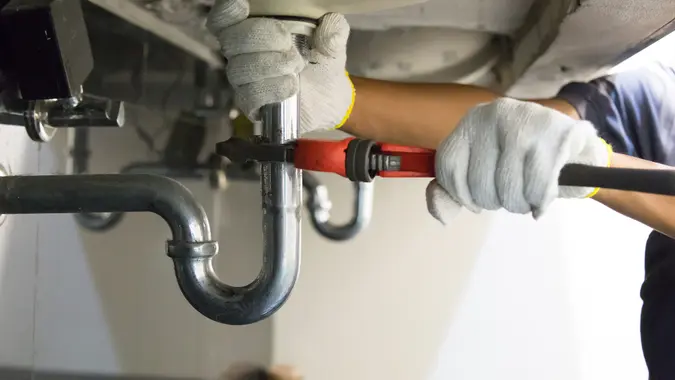Here’s the Maximum Income Required to Be Considered Lower Class in 2025

Commitment to Our Readers
GOBankingRates' editorial team is committed to bringing you unbiased reviews and information. We use data-driven methodologies to evaluate financial products and services - our reviews and ratings are not influenced by advertisers. You can read more about our editorial guidelines and our products and services review methodology.

20 Years
Helping You Live Richer

Reviewed
by Experts

Trusted by
Millions of Readers
We’ve all heard terms like “middle class,” “lower class,” and “upper class,” but what do they really mean today? Class isn’t just about income or a number on a paycheck; it also reflects the types of jobs people work, the neighborhoods they can afford, and how much financial stability they truly have.
Class can affect everything from access to healthcare and education to homeownership and retirement planning. And while America is often seen as a land of opportunity, income inequality and rising living costs have made it harder for many families to move up the economic ladder.
Understanding where you fall within this system is the first step toward financial empowerment and can even help you qualify for programs designed to ease the burden. Let’s take a closer look at what it means to be considered “lower class” in 2025, based on income, geography and cost of living.
What Defines “Lower Class”?
Economists typically define the lower-income or lower class threshold at 50% to 67% of the median household income, depending on the source and context. For instance, the California Department of Housing and Community Development categorizes households earning up to 80% of the Area Median Income (AMI) as “lower income,” and those earning up to 50% of AMI as “very low income.” These percentages are commonly used to determine eligibility for assistance programs like Section 8 and public housing.
Meanwhile, broader economic studies often flag incomes below two-thirds of the national median as lower-income. Based on the most recent U.S. Department of Housing and Urban Development (HUD) national median family income estimate of around $104,200, two-thirds place the cutoff at roughly $69,466.
HUD’s 2025 Income Limits
In April 2025, HUD released updated income limits. For a four-person household, the very low income threshold (50% of AMI) varies widely by region:
- Los Angeles County: up to $65,750
- New York, New York: up to $64,400
- Chicago, Illinois: up to $53,200
- Houston, Texas: up to $49,500
- Atlanta, Georgia: up to $47,300
These limits indicate that households earning in this range are generally considered lower-income in their area.
Regional Realities
In high-cost metro areas like San Francisco, even six-figure incomes fall within “low-income” due to the high AMI. For example, in Santa Clara County, a single-person household with an annual income up to $111,700 still qualifies as low-income.
On the other hand, in lower-cost areas, national income thresholds can mask real financial challenges, as lower living expenses don’t always mean greater affordability or economic stability.
A Practical National Estimate
- National median household income: $104,200
- 67% of that: $69,814
- 50% of that: $52,100
So, broadly speaking, households earning below $69,814 annually are likely considered lower class. At an even stricter definition, for those earning under half the median, the cutoff drops to around $52,100.
Why This Matters
Being defined as lower class isn’t just a label; it has real consequences, including:
- Eligibility for assistance programs like Medicaid, Section 8 vouchers or SNAP
- Housing costs exceeding 30% of income, resulting in financial strain
- Reduced savings and emergency buffer, making families vulnerable to crises
The line between economic classes has always been blurry, but in 2025, it’s become even harder to define, let alone navigate. As housing costs soar, wages struggle to keep pace and everyday essentials become more expensive, many Americans are finding themselves classified as “lower class” even while working full-time jobs.
Knowing where your household income stands in relation to national and regional thresholds can open the door to support programs and help you plan for a more stable financial future. It also highlights a growing need for policies that address affordability, wage growth and economic mobility.
Whether you’re just learning where your income falls or trying to understand the broader picture, the key takeaway is this: Class isn’t fixed, and understanding the system is the first step toward changing it.
More From GOBankingRates
- Nearly 1 in 3 Americans Hit by a Costly Holiday Scam, Norton Survey Shows -- How To Avoid This
- Here's What the Average Social Security Payment Will Be in Winter 2025
- How Middle-Class Earners Are Quietly Becoming Millionaires -- and How You Can, Too
- The Easiest Way to Score $250 for Things You Already Do
 Written by
Written by  Edited by
Edited by 

























